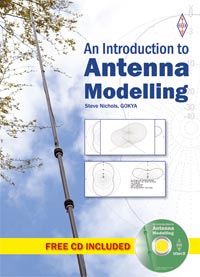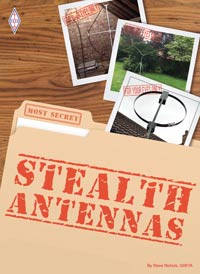
Note: You can find HF short-path propagation prediction charts from the UK at:
http://www.infotechcomms.net/propcharts/
Solar conditions improved over the last month. As I write this on 5 October the solar flux is 76, but it did touch 91 during the last 30 days.
HF conditions have improved dramatically, but this is mainly due to the seasonal change. If you haven’t been on HF for the last few months get on now!
Openings have included 10m paths to Malaysia and VK, although I couldn’t hear them.
21MHz (15m) is opening up reliably – the US is easily workable at times. I worked W8FHF in Ohio using 100W to a long wire laying on the roof – he was stronger on that antenna than any of the others.
7MHz (40m) is also showing great promise. You can hear the US in the evening quite well and morning openings to VK are possible. Gerry VK7GK in Tasmania was 59 on 7.160MHz the other morning (long path) and gave me 57 on the Windom.
October also brings CQWW which always brings out the DX, so get on the bands.
Now lets look at the rest:
The equinox periods provide longer daytime periods than winter, but logically, shorter night-time periods too. These tend to be the best months for working North-South paths, such as UK to South Africa and South America.
On 160m (1.8MHz or Top Band), look for short-skip and DX openings at night. Again, no daylight skip is possible due to absorption, but openings out to 1,300 miles and occasionally further afield can be expected at night with conditions peaking around midnight and again at sunrise (greyline).
80m (3.5MHz) will generally follow the characteristics of Top Band at night, but will also provide good openings out to around 250 miles during the day. These will lengthen to around 500-2,300 miles at night with fairly good DX opportunities at times. At this point in the cycle 80m should still provide good DX as absorption is still quite low.
40m (7MHz) Forty metres should open to DX in an easterly direction at sunset. Openings to the west should be possible after midnight and should peak just before sunrise. Contacts should be possible during the day, although, again, lower critical frequencies may mean that it is difficult to work other UK stations while perfectly possible to talk to European stations. If the flux rises then 40m may open up to NVIS contacts around the UK. Look out for long path openings to VK/ZL in the morning too.
20m (14MHz) is likely to be the best DX band between sunrise and sunset. The bands may occasionally open after dark, perhaps to the south west form the UK. Good openings will be possible during daylight hours out to around 2,300 miles.
17m/15m (18MHz/21MHz) should provide fairly good DX openings during daylight hours, especially to Africa and South America, with 17m being open more often than 15m. Once again, 15m may struggle to open during times of low solar flux, but could provide good openings if it rises above about 80-90. Be prepared for some surprises though as this is a good month for 15m. Both bands are likely to close after sunset towards the end of the month, although do check for openings after dark as they can occur.
12m/10m (24MHz/28MHz) These could be disappointing bands if the solar flux remains low. If the solar flux heads towards the high 80s/90s then openings will occur on both bands, although 24MHz will open first. If it breaks the 100 mark then expect to see some good DX openings on 10m, especially in late autumn.
You can find HF short-path propagation prediction charts from the UK at:
http://www.infotechcomms.co.uk/propcharts/
You can also listen to Steve G0KYA's HF propagation podcast on iTunes or at http://www.g0kya.blogspot.com/
Steve G0KYA
RSGB Propagation Studies Committee











